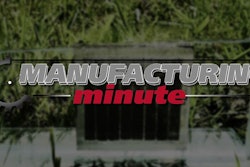While the Internet of Things (IoT) developed consumer awareness through the wearables and home appliance industries, it’s my belief that its primary contributions will be in transforming the manufacturing industry. From smart factories to predictive machine maintenance, IoT will redefine how manufacturers meet industry demand.
This transformation is possible because we’ve entered the fourth industrial revolution, also known as “Industry 4.0.” In this new analytics-driven era, the acquisition and implementation of sensors, as well as wireless data connectivity, is no longer cost or time prohibitive — and consequently, sensor data is becoming more available and easier to collect in real-time.
Companies in all industries can benefit from seeing and analyzing this data, but for manufacturers especially, access to real-time analytics is a compelling value proposition. Because manufacturing is an industry with notoriously slim margins, small improvements in managing downtime or increasing yield can mean the difference between expanding and contracting a manufacturing plant’s footprint.
Gaining Visibility, Increasing Efficiency
Using sensors across the production line – from the shop floor to the top floor — manufacturers can collect their value chain’s data in real-time. They can then leverage purpose-built applications to collect that data from multiple machines and production lines, and gain a clearer picture of where efficiencies are (and are not) happening across their value chain. Calibrating their production line based on real-time analytics allows application users to define and maximize their value chain’s levers.
With this information in hand, manufacturers can better respond to events in near real-time, reducing both production inefficiencies and downtime. For larger manufacturers, reducing inefficiencies by just one percent can equate to millions or tens of millions of dollars in cost savings. By reducing production costs and inefficiencies, manufacturers’ production responsiveness increases, and the organization as a whole becomes more nimble. The result is greater downside protection (i.e., a recession-type environment) and an opportunity to generate greater profits under normal operating conditions.
Competitors unwilling to adopt IoT strategies will face the tough task of price matching manufacturers who, through IoT strategies, are profitable enough to undercut them in any market environment.
Sounds great, right? But is it realistic?
There’s a lot of uncertainty surrounding IoT, after all; and many manufacturers have been skeptical about the benefits associated with adopting IoT strategies. But with the right IoT solution, and a true understanding of end user demand, manufacturers who adopt IoT strategies will gain significant data and efficiency advantages over the competition.
Developing the Right Strategy
IoT devices like sensors generate significant amounts of data — and without the right strategy in-place to collect and leverage that data, manufacturers can end up drowning in data they don’t use, or miss opportunities to improve business efficiencies.
There are two common IoT strategies that we have seen manufactures implement:
- IoT data for predictive maintenance purposes, where sensors alert production line managers when manufacturing machines are operating outside of their statistical control limits.
- IoT data for operational efficiency purposes, where sensors inform managers to value chain inefficiencies in real-time.
The machinery on a typical manufacturing line are major financial investments for any manufacturing organization. The ROI on these machines is often the difference between financial success or failure — sometimes even more than the economic success of the product itself. The two previously mentioned IoT strategies can help manufactures ensure they are getting the most from their equipment investment and help maximize their bottom line.
Focusing on the User
Once you know how you want to use incoming sensor data, it’s essential to focus on who is going to use that data to make decisions. End user adoption is where manufacturers will need to focus their attention. Failing to account for the diverse roles and skill sets of their user base will lead to poor adoption and acceptance rates. Research has shown that a large percentage of the application user base for these manufacturers are not sitting in offices; they are on the move and out on the factory floor or, for example, on an oil rig.
When you treat all these users the same, you are setting yourself up for poor analytics adoption and acceptance rates. The result is a lack of visibility into your production lines, underperformance across your manufacturing operations, and suboptimal machine performance.
Simplifying software use will increase time to value associated with adopting an active IoT strategy. The challenge will be bridging the knowledge gap and driving end-user adoption for employees who may have worked in roles that traditionally did not require an understanding of analytics.
Fortunately, modern business intelligence applications provide individualized views tailored to the roles of different users — empowering them to discover new insights and drive operational performance. Clients, managers, and employees need more data as technology increases market competition, requiring manufacturers to become more nimble and market reactive. It’s just a matter of time before the conversation shifts away from how to deal with a malfunctioning PLC towards developing best industry practices in developing an intelligence system across one’s value chain.
Patrick Chartrand is Solutions Strategy Analyst at Logi Analytics.























